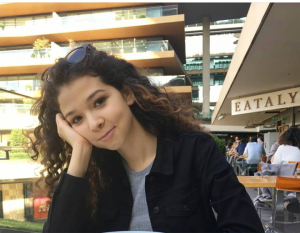
BY ŞEBNEM TÜRE (PSYC/II) sebnem.ture@ug.bilkent.edu.tr
A city is an area of culture. It’s not difficult to understand its economy and its citizens by taking a deeper look at its infrastructure, schools and community centers. However, more implicitly, the streets themselves can also speak, with monuments and statues being one type of symbol that can communicate through the public spaces of a city. Ankara has a number of such symbols; it has also lost some, and replaced some others.
To give a brief history, Ankara’s first monument was the “Victory” Monument, whose erection was supported by donations from the public as campaigned for by the newspaper Yenigün. In 1925, the elite of the new Turkish Republic held an international competition and chose Austrian sculptor Heinrich Krippel to create the first symbol of the new capital, which would commemorate the heroes of the War of Independence. In 1934 another Austrian sculptor, Anton Hanak, was commissioned to create the “Security” Monument in the middle of Kızılay Square. The drive for modernization, and Westernization, is evident in these works. In subsequent years, the story being written in the capital continued with the placing of statues of Atatürk and İnönü, as well as Mimar Sinan, in front of the newly established faculties of Ankara University. Going forward to the 1940s and ’50s, we see a new group of intelligentsia arising from the new faculties and institutes of fine arts, and more Turkish names appearing on statues as their sculptors – for example, that of Tamer Başoğlu, the creator of the “Science Tree” in front of METU.
We can say that when the establishment of the new republic was on the agenda, a new history was highlighted – a history that came from Anatolia rather than the Ottoman Empire. It was Atatürk’s suggestion to make the first museum in Ankara one that focused on the Hittites, and so it was not a random decision when in 1973 Mayor Vedat Dolakay chose the “Hittite Sun Course” as the design for a monument that would become the new symbol representing the city. Mayor and represent are key words here. First, as I have said, sculptures tell stories about the important events and ideologies of the period in which they are created. Second, in deciding which stories to tell about the residents of a city, the mayor often has a role. For example, former mayor Ali Dinçer’s project of uniting the city by means of the plastic arts is worth mentioning here; he provided support for many of the works we still see on the streets of Ankara, such as those by Burhan Alkar and Metin Yurdanur. Alkar was clearly influenced by the global peace movement when he created the “Peace Statue” in Sakarya Street, while Yurdanur, who designed the “Hands” reaching toward the Palace of Justice in the park commemorating the murdered journalist Abdi İpekçi, was trying to say something as well.
Returning to the subject of Dolakay’s “Hittite Sun Course,” we can move on to more recent years and recall that when Melih Gökçek assumed the post of mayor in 1994, one of his first initiatives was an effort to change the city’s logo. Basically, he arranged for a competition to find a new one; Kocatepe Mosque was selected amid great controversy, and the issue ended up in court. Although today the Metropolitan Municipality still uses the Kocatepe symbol, Ankara’s logo was changed to a stylized Angora cat face; this didn’t end the controversy, however. During the same years as those events were taking place, another conflict related to sculpture occurred when Mayor Gökçek, objecting to what he considered the obscenity of Mehmet Aksoy’s “Nymphs,” had it replaced with a different statue.
The controversies we see here are not related to taste in art; for many years, municipal leaders have continued to fight over the face of the city that they would show to the world. After Gökçek left office, the new mayor, Mustafa Tuna, soon moved to take some of his remaining sculptural projects off the streets, including the “Tulip” in Kızılay Square, and the greatly debated “Autorobot” and “Dinosaur” statues. Even today, we have seen one of the candidates for the İstanbul Municipality mayoralty, Ekrem İmamoğlu, being criticized over a new monument that went up during his time as mayor of İstanbul’s Beylikdüzü district, although the criticisms were later refuted.
All of these events remind me of some perhaps more significant examples of controversy surrounding monuments around the world. The nationwide movement in the USA to remove Confederate monuments, the Taliban’s destruction of Buddha statues in Afghanistan, Norway’s removal of some of its historical monuments . . . all remind us that sculpture can serve as a political symbol, and can say a lot about a city when examined in detail.
I’m writing these words on the evening of the latest municipal elections. People are talking about what the “appropriate” face of Ankara as a capital should be, and who can more successfully reveal that face. By the time you read this, you’ll already know the results.
Let’s hope that in the new era, no matter who is elected, we build monuments celebrating peace, freedom, unity and love . . . as this city deserves.
